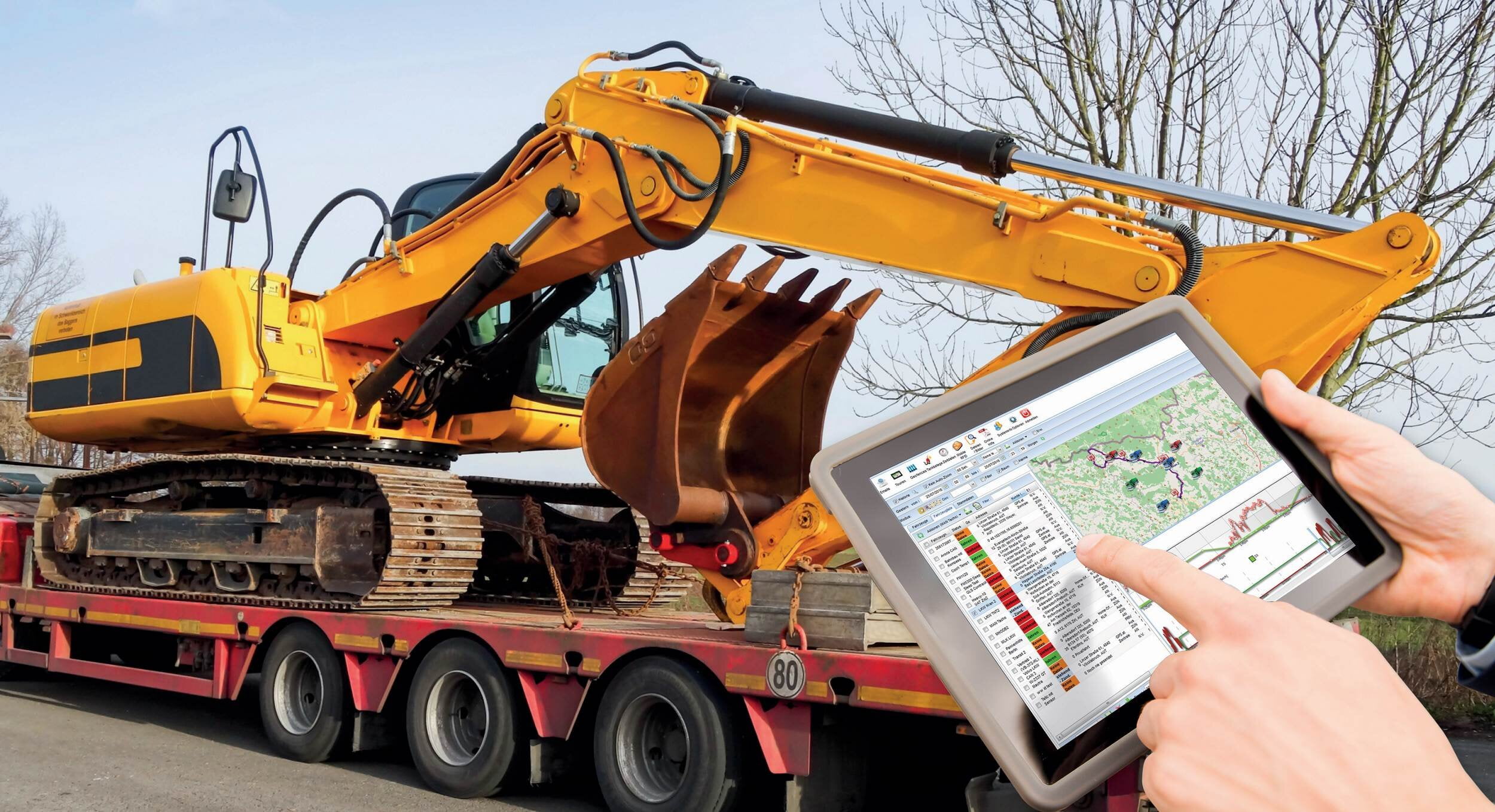Choosing the best heavy equipment tracking system can be essential to improving your operational efficiency and profitability. Recent advancements in asset tracking solutions provide real-time data for managers across companies with vital insights into their utilization, locations, and maintenance needs. This article looks at effective methods for tracking heavy equipment and the pros of various tracking systems through an examination of their implementation and maintenance for optimum performance.
How to Track Heavy Equipment Effectively
Heavy equipment tracking is a method of monitoring the location and use of the machinery in real-time. This advanced equipment management entails the use of GPS and telematics to get information regarding data on performance and status. By implementing asset tags and other tracking devices, companies can streamline their construction equipment management, ensuring optimal utilization and reducing downtime. This system not only enhances operational efficiency but also significantly improves maintenance scheduling and overall asset security.
Benefits of Tracking Heavy Equipment
Tracking heavy equipment offers numerous benefits that can transform your operations:
- Improved Maintenance: Real-time data on equipment usage and condition allows for proactive servicing, reducing unexpected breakdowns.
- Theft Prevention: GPS tracking sends you alert notifications in real-time about unauthorized movements, saving many of your valuable fixed assets.
- Enhanced Productivity: By optimizing asset management, you can ensure that all equipment is utilized efficiently, minimizing idle time.
- Accurate Billing: Monitoring work hours and equipment usage helps in generating precise invoices for clients.
- Better Resource Allocation: Understanding the exact location and status of your machinery enables more informed decisions on resource distribution.

Heavy Equipment Tracking Systems, Devices and Software
Heavy Equipment Tracking Devices
Heavy equipment tracking devices are essential for monitoring the location and usage of outdoor equipment. These devices provide accurate real-time data using advanced RFID technology to ensure better asset management and security. By implementing these tracking solutions, companies can reduce downtime, prevent theft, and significantly enhance operational efficiency.
Types of Tracking Devices
There are different kinds of tracking devices available, each meeting various needs and environments. Choosing the correct device allows for accurate monitoring and managing your heavy equipment.
Key Features to Look for in Tracking Devices
When choosing a tracking device for heavy equipment, one should consider several key features for better functionality and efficiency. Choose devices with real-time location tracking, strong asset tagging, and durable construction to withstand harsh environmental conditions. Besides, ensure that the devices will provide data in full reports and easily integrate with traditional management systems for smooth operations.

Heavy Equipment Tracking Software
Heavy equipment tracking software is the backbone of effective asset management, integrating seamlessly with GPS devices and metal asset tags. It allows real-time location tracking and offers insights into equipment usage history and maintenance records. With the ever-advancing technology, it becomes easier to streamline resource allocation, reduce equipment downtimes, and ensure smoother overall operations.
Key Functionalities
- Real-time GPS Tracking: Provides precise location data for all equipment, ensuring optimal utilization.
- Maintenance Scheduling: Automates service reminders to prevent unexpected breakdowns.
- Usage Reports: Tracks engine hours and usage patterns to inform better resource allocation.
- Geofencing: Sets virtual boundaries to receive alerts on unauthorized movements.
- Data Analytics: Offers insights into equipment performance and operational efficiency.
Customization Options
The customization features of heavy equipment tracking software allow businesses to tailor the system to align with their unique requirements. This includes alerts regarding maintenance, geofence definitions around locations, and custom dashboards to enable fast data visualization. Through such customizable features, companies will be able to improve the effectiveness and efficiency of strategies associated with asset management to ensure they meet the unique operational requirements.
Heavy Equipment Tracking Apps
Heavy equipment tracking apps allow you to monitor and manage your assets directly from your mobile device. They also allow real-time updates, increasing the assurance of executing fast and decisive decisions anywhere.
An ideal tracking application should be able to offer real-time GPS tracking, customized alerts, and user-friendly interfaces. This application should allow for easy integration into other management systems while working in a results-oriented manner on advanced security measures to safeguard important data.
Benefits of Using Mobile Apps for Tracking
- Real-time Access: Monitor and manage assets from anywhere, at any time.
- Instant Alerts: Receive notifications for maintenance, unauthorized movements, or other critical events.
- Enhanced Efficiency: Streamline operations by making quick decisions based on up-to-date information.
- Improved Productivity: Optimize equipment usage and reduce downtime with immediate data insights.
- User Convenience: Easy-to-use interfaces make it simple for operators and managers to stay informed on the go.
Implementing Equipment Asset Tags
Equipment asset tags are crucial parts of an exceedingly important process in contemporary asset management. They equip an organization with a reliable source for observing and tracing heavy equipment or machinery. With the implementation of the asset tagging equipment system, an organization will receive detailed information about its assets in terms of location, usage, and maintenance details. Such a system provides operational efficiency with protection from theft and unauthorized use, directing all the equipment toward effective utilization.
Benefits of Asset Tagging
- Improved Inventory Management: Asset tags for equipment allow the company to keep track of all its assets, reducing the chances of loss or misplacement.
- Theft Prevention: Tagging adds an extra line of defense by enabling identification and preventing unauthorized movements or theft.
- Enhanced Regulatory Compliance: Maintain accurate records and ensure compliance with industry regulations through detailed asset tracking.
- Streamlined Audits: Simplify the auditing process with precise and up-to-date information on asset location and status.
- Better Lifecycle Management: Track the entire lifecycle of equipment from acquisition to disposal, optimizing maintenance schedules and replacement planning.
Types of Asset Tags
There are numerous types of asset tags, all offering something different to fit a wide array of needs. Speaking about asset tags for outdoor equipment, strong metal asset tags, and RFID tags work well because they withstand harsh conditions. For indoor environments, barcode tags are cost-effective, and QR code tags provide quick scanning for efficient inventory tracking. The choice of the right kind of asset tag should depend on individual needs, including environmental conditions in which the equipment operates and the expected accuracy of data.
Common Challenges
Implementing asset tagging systems can present several challenges, such as harsh environmental conditions that can damage tags and the complexity of tracking large fleets. For outdoor settings, traditional tags may not endure weather elements, leading to data inaccuracies. Additionally, ensuring consistent tag readings across different equipment types can be a logistical hurdle.
Metal asset tags for equipment form quite a robust solution for the toughest of environments since the tags themselves are durable and resistant to damage. An overall staff training program can ensure proper usage and maintenance of the tagging system. Regular audits and updates can address and mitigate inconsistencies in the asset tracking system.
Maintenance and Management of Asset Tags
The maintenance and management of asset tags should be effective to ensure their longevity and perfect tracking accuracy. This will help avoid discrepancies and ensure perfect functioning through periodic inspections and updates of information. Here are some key practices for maintaining and managing asset tags:
- Regular Inspections: Check for wear and tear to replace damaged tags promptly.
- Cleaning: Keep tags free from dirt and debris to ensure clear readings.
- Software Updates: Ensure the tracking software is up-to-date to maintain compatibility with the tags.
- Training: Provide ongoing training for staff to handle and manage tags correctly.
- Audit Schedules: Conduct regular audits to verify the accuracy and functionality of all asset tags.
Maximizing Efficiency with the Right Tracking System
Choosing the best heavy equipment tracking system involves careful consideration of various devices, software, and asset tagging options. These technologies help businesses enhance operational efficiency, improve maintenance schedules, and safeguard their valuable assets. Implementing a robust tracking system streamlines management and offers significant benefits such as theft prevention and improved productivity. Investing in tracking solutions is essential for optimizing resource allocation and achieving long-term success.

Try itemit
Choose a better way to track
your assets.
Start your free 14-day trial now!

Keep Learning
itemit Blog
Tips, guides, industry best practices, and news.
What Is Visual Inspection? Definition, Methods, and Best Practices in Manufacturing
Learn the meaning of visual inspection, its methods, tools, and applications in manufacturing. Discover best practices for accurate quality control.
5 Tips For Better Equipment Management
Equipment management is vital to ensuring your business’s smooth operations. Discover how to get the most out of your hard-earned investments.
What is equipment booking software and do I need it?
What is equipment booking software? Should you use it if you’re hiring out or sharing equipment? How can itemit help you book equipment?



